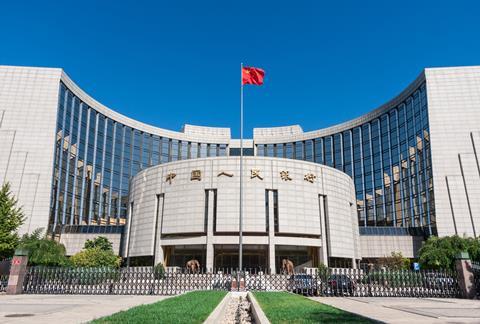By Nan Luo, Head of China

China has been one of the PRI’s fastest-growing markets since its debut there in 2017, but only now has our first asset-owner signatory joined up. Chinese giant insurer China Ping An joining the PRI implies a significant shift in the ESG investment landscape in China and beyond.
In most markets, asset owners have been the first movers on ESG integration, but in China, the reverse has held true so far. Here, ESG integration has been driven by demand from international investors, coupled with China’s politically mandated push towards green and high-quality sustainable development.
‘ESG’ is still seen as an exotic concept, but in recent years investors, policy makers and regulators have started to take it more seriously, as a result of a changing landscape both domestically and globally.
The Chinese central bank, financial regulators and affiliated bodies have been taking a leading role in promoting green finance and ESG investing through domestic and international initiatives. These have included local piloting programmes, education and capacity building, research and policy leadership, and regulatory guidance to set the framework and support the implementation of the policy. Areas of focus include developing green financing standards, improving ESG disclosure, developing ESG indices and products, as well as promoting ESG integration by leading investment practitioners.

More than half of the top 10 Chinese mutual fund managers have become PRI signatories and they have been the driving force in implementing the Principles. Interest has recently spread to private equity and the asset management arms of banks. However, in the absence of demand from local asset owners, asset managers have struggled to adopt the ESG principles at scale, and in turn it has been hard to develop meaningful engagement with companies. There is still a fear of compromising return, thanks to a lack of awareness and understanding on ESG issues, as well as the pressure of meeting short-term targets.
With Ping An’s public commitment, however, we are seeing progress in raising the awareness of ESG and its importance for long-term investment. In addition, other big asset owners have started work internally and are intending to catch up.
One of the more technical challenges to integrating ESG issues into investment management has been the lack of historic and meaningful ESG data disclosed by companies. Regulators are expected to address this imminently, but they are concerned about the market readiness and capacity of listed companies to understand and disclose ESG information too soon. They are also cautious about the cost to companies associated with mandatory reporting.
Nevertheless, gradual steps have been taken: for example, the Environmental Ministry and the Securities Regulator agreed to join forces to establish a mandatory environmental disclosure system for listed companies and bond-issuing enterprises. This was expected to become a requirement by 2020.
The PRI report ESG disclosure in China has made recommendations on the primary ESG indicators for China’s future mandatory ESG disclosure framework as prepared by the financial regulator.
The question of whether China should develop its own ESG standards and matrix to suit its unique differences is still a matter for debate. What is clear is the consensus in favour of the ESG philosophy in principle, whatever the ultimate methodology.
Investors in the Chinese market have found some indicators are less salient here than elsewhere – for example, gender ratio is typically not seen as important. The ‘E’ or environmental factors have become a focus thanks to new and tougher regulation, but the reality of climate change has not yet been taken seriously enough, partly due to lack of awareness and partly to different investment horizons. But we have seen gradual positive change: some signatories are building capacity by joining the UK-China TCFD pilot project and the Climate Action 100+ initiative.
We have seen gradual positive change in the China market: signatories are building capacity by joining the UK-China TCFD pilot project and the Climate Action 100+ initiative
As analysis of how material ESG indicators affect the China market develops, Chinese investors are likely to demand more and deeper ESG integration in order to gain better insights into their portfolios.
Globally, engagement has been a powerful ESG investing approach, but it has been difficult to establish in China because a big proportion of the listed companies are largely state-owned. Large asset owners could play a key role in changing this. Investment managers already attempting to build awareness with their portfolio companies will welcome this as a springboard to start useful dialogue with corporates.
Even at this early stage, it has been exciting to watch the speedy development of ESG investing in China with the PRI. It is particularly gratifying to have added China Ping An – an influential long-term investor – as the first PRI asset owner signatory in China, a great addition to the asset owner community. I hope their commitment and leadership will encourage more asset owners to integrate ESG issues, further shifting the landscape and accelerating responsible investing at scale in China and beyond.
This blog is written by PRI staff members and guest contributors. Our goal is to contribute to the broader debate around topical issues and to help showcase some of our research and other work that we undertake in support of our signatories.
Please note that although you can expect to find some posts here that broadly accord with the PRI’s official views, the blog authors write in their individual capacity and there is no “house view”. Nor do the views and opinions expressed on this blog constitute financial or other professional advice.
If you have any questions, please contact us at [email protected].








